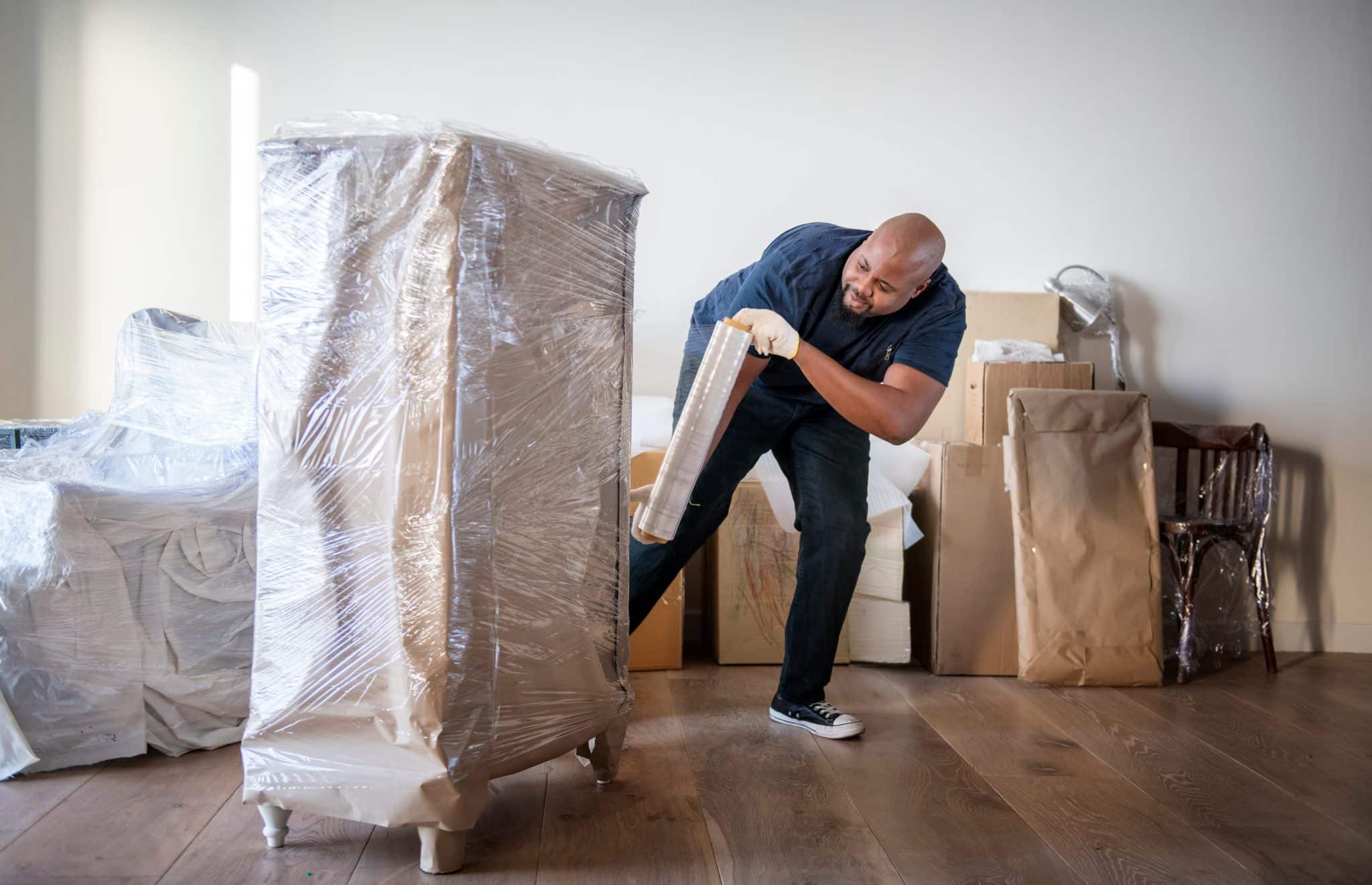Office Relocation Etiquette: How to Move Without Disrupting Your NYC Neighbors
Managing a corporate move in the bustling environment of New York City can be a challenging endeavor, not only for the organization involved but also for the surrounding community. The importance of maintaining a respectful and considerate approach during this process cannot be overstated.
In the following discussion, we will explore the critical considerations and strategies for planning an office relocation that minimizes disruption to your NYC neighbors, including scheduling, noise control, and community communication. This conversation could be particularly beneficial for those seeking to foster positive relationships within their community while undergoing a significant change.
Understanding the Importance of Etiquette

Acknowledging the pivotal role of etiquette in an office relocation process sets the foundation for a seamless shift, fostering mutual respect, effective communication, and minimizing potential conflicts among all involved parties. This understanding helps establish a harmonious atmosphere, thereby guaranteeing the smooth progression of relocation activities.
Incorporating cultural sensitivity into the relocation process is a significant aspect of office relocation etiquette. This is particularly relevant in the cosmopolitan city of New York, where diverse cultures intersect.
Approaching the process with cultural sensitivity ensures that all stakeholders, including employees, clients, and neighboring businesses, are treated with respect and understanding. It also helps avoid miscommunication, misunderstandings, or any form of disrespect that could arise from cultural differences.
Business decorum, on the other hand, involves maintaining professionalism throughout the process. This includes appropriately informing all relevant parties about the impending move, addressing any concerns promptly and respectfully, and ensuring minimal disruption to normal business operations.
Moreover, maintaining business decorum also involves respecting the rules and regulations set by the building management, local authorities, and any other relevant bodies.
Scheduling Your Office Move
Once the importance of etiquette is well understood, the next step in the office relocation process is to devise a strategic and considerate schedule for the move. This planning element is vital and requires thoughtful consideration of move logistics and parking arrangements, promising a smooth shift with minimal disruption to your NYC neighbors.
Your move logistics should consider factors such as the day and time of the move, the volume of items being moved, and the route to the new location. Endeavor to schedule the move during non-peak hours to avoid causing unnecessary traffic congestion. If your office equipment is bulky, consider spreading the move over several days to lessen the impact on the neighborhood.
Additionally, parking arrangements are a major concern during office relocations. Inadequate planning may lead to blocked driveways or limited parking availability for your neighbors. Work with local parking authorities to reserve spaces for the moving truck, ensuring that you aren’t infringing on anyone’s parking rights.
Communicating With Your Neighbors
In the process of office relocation, communication with your neighbors is an important yet often overlooked aspect. A well-planned Neighbor Notification Strategy helps you maintain good relations while minimizing disruptions.
Equally important is the implementation of thoughtful timing strategies for moving activities, which demonstrates consideration for your neighbors’ schedules and routines.
Neighbor Notification Strategy
A strategic approach to neighbor notification is an essential aspect of the office relocation process, ensuring that your business maintains positive relationships with its surroundings while minimally disrupting daily routines. This strategy is not just about courtesy, but about preserving valuable community ties and demonstrating respect for shared spaces.
Effective Neighbor Engagement starts with open, transparent dialogue. Begin by scheduling individual meetings or a general meeting for the announcement. Relocation Announcements should be clear, concise, and provide all necessary details including the expected timeline, reasons for the move, and any potential disruptions or changes they should anticipate.
Moreover, offer an opportunity for your neighbors to voice their concerns. This not only allows you to address potential issues proactively but also demonstrates your commitment to maintaining a harmonious relationship.
In addition, consider providing regular updates throughout the process. This helps to manage expectations, alleviate concerns, and keep everyone informed about the progress of the move.
Considerate Timing Tips
Selecting the right timing for your communications is an essential factor to keep in mind when discussing relocation plans with your neighbors. It’s important to provide ample notice to allow your neighbors to adjust their schedules and expectations accordingly, and to minimize any potential disruption. This strategic timing can alleviate relocation stress for all parties involved.
Organizational tips for considerate timing include scheduling your move during normal business hours when it’s least likely to disturb your neighbors’ routines. If your move involves noisy or disruptive activities, these should ideally be conducted during the middle of the day, when they are least likely to interfere with early morning or late evening peace.
Additionally, providing neighbors with a rough timeline of your move, including the anticipated start and end times of significant activities, can help them plan their day better. Transparency reduces surprises and maintains a cordial relationship during the shift period.
Minimizing Noise During the Move

Minimizing the cacophony associated with office relocation is vital to maintain a conducive work environment during the moving process. This can be achieved by incorporating soundproofing measures and using noise control equipment, key strategies that help alleviate the noise disruptions caused by the moving process.
Soundproofing measures can include the use of noise-absorbing materials such as acoustic panels, foam, or soundproof curtains. These can be strategically placed in areas where the noise is likely to be most disruptive. It’s also important to seal any gaps or cracks in walls and doors where sound can easily penetrate.
Noise control equipment, on the other hand, is a varied category comprising items like noise-cancelling headphones for employees, sound barriers, and even silent moving equipment. Using such tools can drastically reduce the noise levels and help maintain a quiet and productive environment.
It’s also worth considering the noise generated outside the office premises. Engaging a professional moving company that understands the importance of noise control during office relocation can be a smart move. They can employ techniques like careful handling of equipment and furniture to reduce noise from clattering and banging.
Planning the Route and Timing
As we continue our exploration of office relocation etiquette, ‘Planning the Route and Timing’ emerges as a critical stage of this process. It involves meticulous consideration of best moving times and the selection of the most suitable path to minimize disruptions. The balance between efficiency and courtesy during the relocation process hinges greatly on these elements.
Optimal Moving Times
In the intricate process of office relocation, mapping out a best route and choosing the most suitable time for moving can greatly reduce disruptions and guarantee a smooth changeover. The significance of move insurance and the correct packing materials should not be overlooked during this process.
Optimal moving times are typically early in the morning or late in the evening, when traffic is less congested. However, take into account the noise regulations in NYC and the normal operating hours of the building you’re moving into. A professional moving company can provide guidance on this matter.
Plan your move during weekdays, as there is a lower likelihood of encountering social events that could disrupt the process. Avoid moving during peak hours or times when neighboring businesses have important activities scheduled.
Moreover, it is crucial to consider the weather. In New York City, the weather can be unpredictable, and adverse conditions can cause delays. Hence, it’s prudent to monitor the weather forecast closely and have a contingency plan in place.
Choosing the Right Path
While considering the best time for the move is important, carefully planning the route and timing for your office relocation can also greatly reduce potential disruptions and guarantee a smooth changeover. A well-thought-out plan can mitigate potential path obstacles and minimize relocation costs.
To start, evaluate different routes to your new location. Consider factors such as traffic patterns, road conditions, and the accessibility of your new office space. Identify any potential obstacles such as construction sites, narrow roads, or heavy pedestrian areas that could impede the moving process. By doing this, you can choose the most efficient path and avoid unnecessary delays or complications.
Next, consider the timing. Timing your move to avoid peak traffic hours can save money and time. Also, take into account any local regulations or restrictions that might affect your move, such as parking regulations or time-of-day restrictions for large vehicles.
Lastly, always factor in potential relocation costs. Accurate budgeting can help prevent unexpected expenses. This includes not only the cost of the moving service, but also costs associated with potential delays or difficulties encountered en route.
Efficient Packing Strategies
To guarantee a smooth office relocation, it is crucial to employ efficient packing strategies, which not only save time but also greatly reduce the potential for damage or loss of valuable items. Key to this process is the proper use of packing materials and implementation of a de-cluttering strategy.
Packing materials such as sturdy boxes, bubble wrap, and packing peanuts provide ample protection for office equipment and essentials during transit. Make sure to label boxes clearly, specifying the contents and their destination room in the new office. This saves time during unpacking and organizing.
However, before you start packing, a de-cluttering strategy is essential. This involves sorting and discarding redundant materials, outdated files, and broken equipment. It not only frees up space but also reduces the volume of items to be moved, saving costs and effort. A systematic approach to de-cluttering would involve categorizing items into ‘keep’, ‘discard’, and ‘recycle’.
Hiring Professional Movers
Once packing and de-cluttering tasks are underway, the next vital step in an office relocation process is to hire professional movers. This critical part of the move necessitates careful consideration and strategic planning. The process of mover selection should be meticulous, making sure the company chosen has a track record of reliability and professionalism. For those looking to ensure a smooth transition, opting for a trusted office relocation in New York can make all the difference.
One must start by compiling a list of potential movers, then proceed with a thorough vetting process. This includes checking online reviews, seeking referrals, and verifying credentials. It’s essential to make certain that the chosen company is licensed and insured for your particular type of move.
After the selection process, the next step is cost estimation. This involves an expert from the moving company visiting your office to assess the volume and nature of goods to be moved. The cost will depend on factors such as the distance of the move, the quantity and type of items, and any additional services required such as packing or storage.
Dealing With Unforeseen Issues
Despite meticulous planning, unforeseen issues can arise during an office move. Two such potential complications include unexpected delays and noise complaints. A thorough understanding of these challenges and strategies for their resolution are essential to guarantee a smooth shift.
Handling Unexpected Delays
In the intricate process of office relocation, confronting unexpected delays and dealing with unforeseen issues is a scenario often encountered, requiring a strategic approach for effective resolution. Proper delay management and contingency planning play vital roles in maneuvering these unpredictable circumstances.
Delay management involves recognizing potential disruptions early and swiftly implementing solutions to minimize their impact. It includes being flexible with your timeline, maintaining open communication with your relocation team, and coordinating with service providers to resolve any issues promptly.
On the other hand, contingency planning is about anticipating possible problems and having a backup plan. It might involve identifying alternative moving dates, securing temporary storage for your office equipment, or arranging for alternate office spaces in case of serious delays.
When dealing with unexpected delays, it’s important to keep your neighbors in the loop. Inform them about the delay and your revised schedule, ensuring they are not unnecessarily inconvenienced.
Resolving Noise Complaints
Another unforeseen issue that might arise during an office relocation involves noise complaints, a matter that calls for effective management and swift resolution. The ambiance of urban life, particularly in New York City, is often punctuated by the sounds of construction, traffic, and bustling activity. However, during an office move, these noises can escalate beyond normal levels due to the movement of heavy furniture, equipment, and packing materials, potentially infringing upon local noise ordinance laws.
To guarantee this, planning should include consideration for soundproofing methods that can be employed during the move. These may include the use of noise-reducing equipment, scheduling the most disruptive tasks for non-peak hours, or even using specialized moving equipment designed to minimize noise.
Furthermore, maintaining open communication with neighbors about the move schedule and anticipated noise levels can help mitigate complaints. It’s also advisable to familiarize yourself with local noise ordinance laws to ensure compliance and prevent legal complications. This not only promotes a more peaceful cohabitation but also demonstrates consideration and respect for the community’s shared space.
Resolving noise complaints promptly and effectively is a key aspect of office relocation etiquette, essential for maintaining a harmonious relationship with your NYC neighbors.
Office Set-Up Considerations
When planning for an office relocation, careful consideration should be given to the new office setup to establish a conducive working environment that fosters productivity and efficiency. Key to this process is effective Space Utilization and thoughtful Furniture Arrangement.
Space utilization involves optimizing the available space to accommodate all necessary equipment and personnel comfortably. Consider the layout of the office, the positioning of the workstations, and the allocation of space for meeting rooms and break areas.
You should also factor in the need for storage areas, and pathways for movement around the office. Efficient space utilization can greatly impact the productivity of the workforce by reducing wasted time and effort.
Furniture arrangement also plays an important role in the new office setup. The arrangement should promote work efficiency, foster team collaboration, and enhance comfort. Consider ergonomic furniture that supports the physical wellbeing of the employees.
The arrangement should also consider the natural light sources, the positioning of the power outlets, and the visibility of the emergency exits.
Strategic office set-up planning can minimize disruption to your NYC neighbors during the relocation and ensure a smooth shift to your new work environment. Remember that a well-planned office is a productive office.
Post-Move Etiquette Tips
Having meticulously planned your office setup to guarantee productivity and efficiency, it’s equally important to contemplate the etiquette of settling into your new office environment. This involves understanding and respecting the dynamics of your new neighborhood, an important aspect of post-move office etiquette.
Firstly, it’s vital to introduce yourself and your company to your new neighbors. This simple act of courtesy goes a long way in establishing a healthy rapport. Additionally, it allows neighbors to understand the nature of your business and its operation hours, mitigating any potential disruptions.
Sound management is another key aspect of office etiquette. While your operations may necessitate noise, it’s important to limit any excessive sound during the early morning and late evening hours, respecting your neighbors’ peace.
Frequently Asked Questions
What Are the Legal Regulations for Office Relocations in Nyc?
In NYC, office relocations must comply with legal regulations including obtaining relevant permit requirements. Noise restrictions also apply to guarantee minimal disruption, particularly during night hours, to maintain a harmonious urban living environment.
How Can I Ensure the Security of Confidential Office Documents During the Move?
To safeguard the security of confidential office documents during relocation, consider services like Document Shredding for unwanted papers and Record Archiving for essential documents. This maintains privacy while keeping necessary records accessible.
Are There Any Specific Insurance Considerations for Moving Office Equipment?
Yes, when moving office equipment, consider equipment valuation to determine appropriate insurance coverage. Protect against potential losses and expedite insurance claims by thoroughly documenting the condition and value of each item before the move.
What Are the Best Practices for Moving IT and Server Equipment?
Best practices for moving IT and server equipment involve meticulous equipment packing strategies and safe transportation methods. This includes careful dismantling, secure packaging, climate-controlled transport, and professional handling to prevent damage and data loss.
How Can I Help My Employees Adjust to the New Office Environment?
To facilitate employee adjustment in a new office, implement strategies of employee inclusion such as involving them in decision-making. Also, optimize the workspace to enhance productivity, comfort, and collaboration. Regular communication is essential throughout this process.







